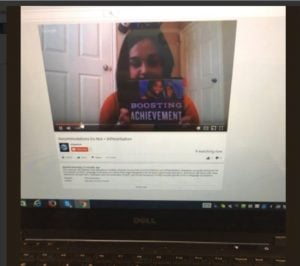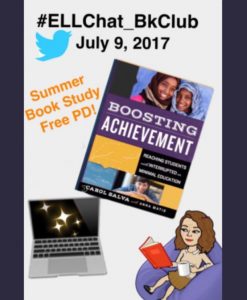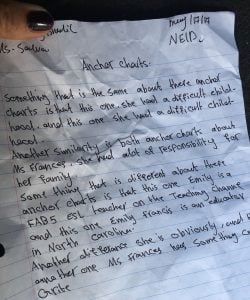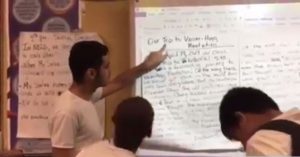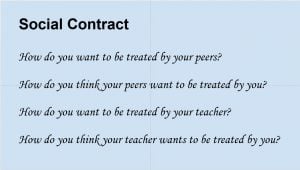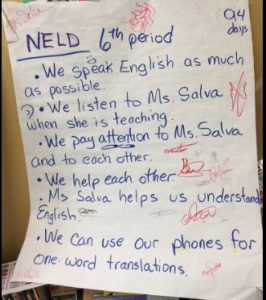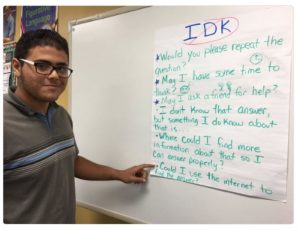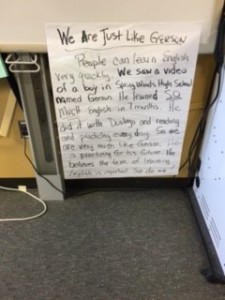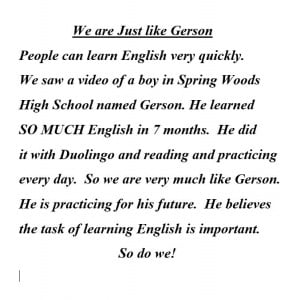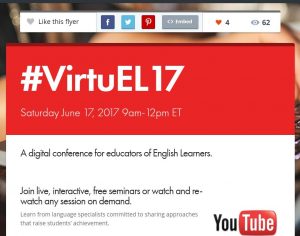It is never too late to benefit from our global, virtual book study on the Boosting Achievement book! If you don’t yet have the book, you can plug in at any point from July 9-Aug 12th. Even before you get your book! (Links to podcasts at bottom of this post)
If you’d rather do the book study on your own or with your colleagues, the questions will be posted on this landing page along with other resources to support self or group study.
Why should you read this book? Well, TESOL International is recommending it for summer reading. And look what Larry Ferlazzo just tweeted about it:
I’ve just finished @MsSalvac ‘s book. If you have any ELL students in your class, you’ll want to read it! https://t.co/7sfa7vVo68 Great job! pic.twitter.com/SkVrjreUCc
— Larry Ferlazzo (@Larryferlazzo) June 25, 2017
Larry is an Ed Week teacher advice columnist, he writes about ELLs for the NY Times and he is an urban high school teacher. These leaders in the ESL industry know what teachers need and so we are ready! Share with your colleagues because this book is becoming popular with ANY kind of teacher. It really helps us see how our SIFE students can participate and thrive in ANY kind of class. In fact! If you want to get all ready and jazzed for this, listen to this podcast with Derek Rhodenizer of #MADPD fame. Derek interviewed me on his show about the book and other innovative thoughts. Listen here.
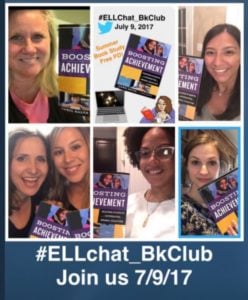 How do you join the virtual book study? Twitter chats & Google Hangouts happen July 9th – Aug 12th! Some of you just did an eye-roll when I mentioned Twitter & Google Hangout. But no worries! There is no need to be proficient with either of those technologies. Anyone can jump right in! To participate or follow the chats:
How do you join the virtual book study? Twitter chats & Google Hangouts happen July 9th – Aug 12th! Some of you just did an eye-roll when I mentioned Twitter & Google Hangout. But no worries! There is no need to be proficient with either of those technologies. Anyone can jump right in! To participate or follow the chats:
On Twitter: All you need is to have/create a Twitter account to follow the hashtag. Just search on #Ellchat_BkClub to see the current book being studied. You will see all the questions and comments from others who are reading the book at the same time. Please do weigh in with your thoughts but it’s ok if you’d rather just see what others are saying. After August 12th, the chats will be archived and links will be posted to the landing page.
Google Hangouts: Same thing. All you need is the ability to watch YouTube. Some of us will be doing a few “hangouts” which will broadcast over YouTube. We would LOVE to have readers in the hangout with us but you can also just watch. Send me a direct message on Facebook or Twitter if you’d like to be in one of the hangouts. Or just watch and comment. See Cassandra Chapa in this pic doing her #VirtuEL17 session and referencing the book!
This round of #ELLChat_BkClub is structured as a 5 week book study. Questions are posted each Sunday on Twitter and on my Facebook Page with a link to the twitter chat. Just search #ELLChat_BkClub or send me a message if you need help to get started.
Here are places you can get this book so that you can participate or launch your own:
You can order straight from the Seidlitz Education Website.
Also, Amazon carries the book now! This is the Amazon link.
PODCASTS & Videos:
Tan Huynh wrote the amazing forward. Tan is a leader in the ESL PD online community and many of us were astounded to learn that he and his family are refugees. His older siblings began school with interrupted formal education. His story and his perspective creates the perfect opening to a book which reveals what is possible for every child. I want to thank him again for his collaboration. We reflect on his the forward in Week 1. You can hear him tell his story on the Rolland Chidiac Connects podcast:
bit.ly/2stwg1z
Carol was also interviewed by Derek Rhodenizer on Beyond The Staffroom. The podcast is a must-follow for education professionals wanting to stay at the forefront of innovation. Derek is an administrator in Canada and one of the co-founders of #MADPD. He read the book and you can listen to the interview here: bit.ly/2tMuKvv
So yes! Please Join us! We know that learning is powerful when we collaborate. Anna Matis and I wrote the book and WE are learning so much as we interact with people about it!
Thanks for your continued support! Support of our book and support of ELLs and SIFE students!
Best,
Carol
